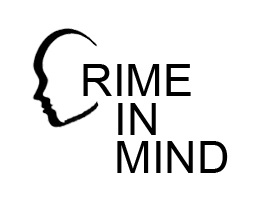by Dr Enys Delmage – Consultant in Adolescent Forensic Psychiatry
Ngã Taiohi – National Youth Forensic Unit. Mental Health, Addiction & Intellectual Disability Service (MHAIDS), New Zealand
This article appears in our latest newsletter (Summer 2023) which can be downloaded here.
Adolescence generally represents a phase of increased impulsivity and sensation-seeking behaviour[i] in tandem with a developing ability to empathise[ii] and a heightened vulnerability to peer influence[iii], all of which have an impact upon decision-making. Also of relevance to the commission of offences, adolescents often display an intensification of emotional processing in response to threatening or rewarding stimuli when compared with adults[iv].
As commented on by the Royal Society[v], the frontal lobes of the brain are the slowest areas to develop[vi], in contrast with the amygdala, the part of the brain responsible for reward and emotion-processing (which sits in the middle of the brain) – the fast phase of development of this region of the brain continues up to around age 25. The frontal lobes of the brain play a key part in various elements of cognition including judgement, empathy, consequential thinking, the inhibition of impulses and coherent planning. The imbalance of the stage of development of the frontal lobes and the amygdala has previously been thought to account for increased arousal and risk-taking behaviour in adolescence[vii] – the true picture is probably even more nuanced by the influence of the external environment and hormonal development triggers[viii]. The brains of children and adolescents are thus uniquely ill-equipped to engage in inhibition of impulses and contemplation of consequences which makes them particularly vulnerable to engaging in antisocial behaviour.
Research can transform lives. We want to support discoveries about what helps people with mental disorder who have been victims of criminal behaviour, or perpetrators of criminal behaviour, and their families, and the clinicians and others who treat them and, indeed, the wider community when its members are in contact with these problems. More effective prevention is the ideal, when this is not possible, we need more effective, evidenced interventions for recovery and restoration of safety.
Please help us by donating to Crime In Mind – DONATE TO CRIME IN MIND HERE
References:
[i] van Leijenhorst L, Moor B, Op de Macks Z, Rombouts S, Westenberg P, Crone E (2010), “Adolescent risky decision-making: neurocognitive development of reward and control regions”, Neuroimage Vol 51, No 1, pp 345-55; Baird, A., Fugelsang, J., & Bennett, C. (2005, April). ‘‘What were you thinking?’’:
An fMRI study of adolescent decision making. Poster presented at the annual meeting of the Cognitive Neuroscience Society, New York; Steinberg L (2007), “Risk Taking in Adolescence: New Perspectives From Brain and Behavioral Science”, Association for Psychological Science Vol 16 No 2
[ii] Strayer J (1993), “Children’s concordant emotions and cognitions in response to observed emotions”, Child Development Vol 64 No 1 pp188-201
[iii] Steinberg L, Monahan K (2007), “Age differences in resistance to peer influence”, Developmental Psychology Vol 43 No 6 pp 1531-43; Sebastian C (2010), “Social brain development and the affective consequences of ostracism in adolescence”, Brain and Cognition, Volume 72, Number 1, 134-45
[iv] Pfeifer, J. H. et al. Entering adolescence: resistance to peer influence, risky behavior, and neural changes in emotion reactivity. Neuron 69, 1029–1036 (2011); Somerville, L. H., Hare, T. & Casey, B. J. Frontostriatal maturation predicts cognitive control failure to appetitive cues in adolescents. J. Cogn.
Neurosci. 23, 2123–2134 (2011); Johnson, C. & Wilbrecht, L. Juvenile mice show greater flexibility in multiple choice reversal learning than adults. Dev. Cogn. Neurosci. 1, 540–551 (2011)
[v] The Royal Society (2011), “Neuroscience and the law: Brain Waves Module 4”Excellence in Science publications”
[vi] Gogtay (2004) “Dynamic mapping of human cortical development during childhood through early adulthood”, Proceedings of the National Academy of Sciences 101, 8174-8179
[vii] The Royal Society (2011), “Brain Waves Module 2: Neuroscience: implications for education and lifelong learning”, Excellence in Science publications
[viii] Blakemore S-J, Burnett S and Dahl RE (2010) The role of puberty in the developing adolescent brain. Human Brain Mapping 31(6): 926-933; Bramen JE, Hranilovich J, Dahl R et al (2012) Sex matters during adolescence: testosterone-related cortical thickness maturation differs between boys and girls.
PLoS One 7(3): e33850; Forbes EE and Dahl RE (2010) Pubertal development and behaviour: hormonal activation of social and motivational tendencies. Brain and Cognition 72(1): 66-72; Sisk CL and Zehr JL (2005) Pubertal hormones organize the adolescent brain and behavior. Frontiers in
Neuroendocrinology 26(3-4): 164-174; Spear LP (2009) Heightened stress responsivity and emotional reactivity during pubertal maturation: implications for psychopathology. Development and Psychopathology 21(1): 87-97; Van Wingen G, Mattern C, Verkes RJ et al (2010) Testosterone reduces amygdala– orbitofrontal cortex coupling. Psychoneuroendocrinology 35(1):105–113
Jacobs E and D’Esposito M (2011) Estrogen shapes dopamine-dependent cognitive processes: implications for women’s health. Journal of Neuroscience. 31(14): 5286–5293
Gordon I, Martin C, Feldman R et al (2011) Oxytocin and social motivation. Developmental Cognitive Neuroscience 1(4): 471–493 Bos PA, Panksepp J, Bluthé RM et al (2012) Acute effects of steroid hormones and neuropeptides on human social–emotional behavior: a review of single administration studies. Frontiers in Neuroendocrinology 33(1) 17-35; Carney D and Mason M (2010) Decision making and testosterone: When the ends justify the means. Journal of Experimental Social Psychology 46(4): 668–671; Eisenegger C, Haushofer J and Fehr E (2010) The role of testosterone in social interaction. Trends in Cognitive Sciences 15(6): 263–271
Forbes EE and Dahl RE (2010) Pubertal development and behaviour: hormonal activation of social and motivational tendencies. Brain and Cognition 72(1): 66-72; Forbes EE, Neal RD, Phillips ML et al (2010) Healthy adolescents’ neural response to reward: associations with puberty, positive affect, and
depressive symptoms. Journal of the American Academy of Child and Adolescent Psychiatry 49(2): 162–172; Op de Macks Z, Bregtje GM, Overgaauw S et al (2011) Testosterone levels correspond with increased ventral striatum activation in response to monetary rewards in adolescents. Developmental
Cognitive Neuroscience 1(4): 506–516

